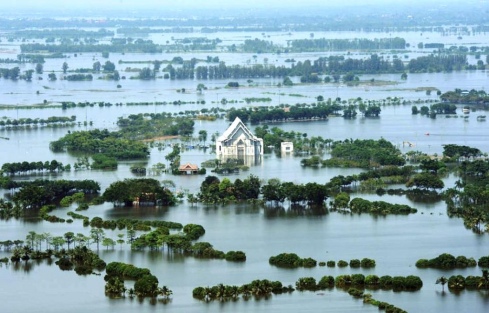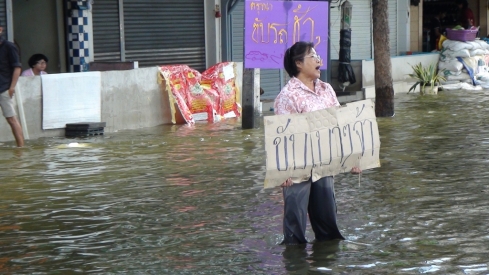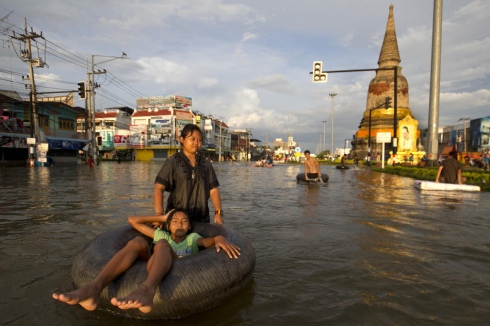
Flickr: dany13
By PISA Program Assistant, Dr. Miriam Grinberg
Where for the other countries in Southeast Asia covered so far in this series sea level rise is a more recent concern, in Thailand, it has long been cited as an important factor behind the oft-discussed “sinking” of its capital, Bangkok. Local data from around the country has shown an increase in sea level of about 5 mm in the last 25 years, a rise that has been accompanied by increased incidents of cyclones, flooding, and deadly storm surges. The country’s devastating 2011 floods, for example, not only impacted over 1.69 million hectares of land, resulting in economic losses of over $2 billion — it also caused global industrial production to decline by 2.5%, as seven major industrial parks and the 800+ companies therein (largely producing automobile parts and electronics) were inundated.
The former is particularly significant given that, for Thailand – the second-largest rice exporter in the world – the agricultural sector still accounts for over 11% of the country’s GDP and employs over 40% of its workers. It is especially sensitive to changes in temperature and precipitation, such as in 2011, when heavy precipitation upstream from Bangkok caused intense flooding throughout the country. These floods have enabled periodic infestations of pests like the brown planthoppers among the country’s rice fields. In the provinces affected by these insects, over 30% of rice production was lost — amounting to nearly 15% of the nation’s total harvest. Beyond rice, other important natural resources, such as mangrove forests and coral reefs, are also under threat from SLR. Their prospects for survival, given current trends, are dim beyond 2070.

Flickr: European Commission DG ECHO
As for Bangkok, the city’s already-precarious position just 5 feet above sea level has, combined with land subsidence, meant a net SLR of up to 25 mm per year. By 2100, this means that the entire city will be completely underwater. This, however, has not stopped the construction of more high-rises, shopping malls, and other developments citywide – the weight of which have been cited as contributing significantly to Bangkok’s sinking – with little pushback from government officials, many of whom fear a pullout of foreign investment should they try to curb such projects.
Proposed solutions to counter this impending dilemma have included relocating the capital or building a $14 billion seawall around it (in the same vein as the one which protects the Netherlands), with others suggesting that efforts be focused on strengthening Thailand’s mangrove forests. Regardless of these specific proposals, it is universally acknowledged that at nearly all levels of policymaking across the country, climate change is not taken seriously enough. This has spelled out in disastrous inaction for many people living along the Gulf of Thailand, where coastal erosion of up to 25 meters a year has already forced whole communities to relocate further inland.

Flickr: dany13
While subsidence – the phenomenon that is sinking Bangkok – is not a direct effect of climate change, the compression of buildings and intense extraction of groundwater that precipitates it is amplified by development strategies that ignore future climate scenarios. It is for this reason that PISA strongly supports climate-wise development in its educational and leadership development programs throughout Asia — because without integrating climate adaptation and mitigation plans into public policy, strengthening capacity and local knowledge on climate change, and supporting regional and international efforts and agreements to this effect, it is not just Bangkok that is at risk of being washed away by rising tides.



Leave a comment